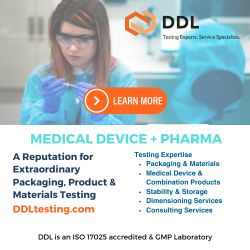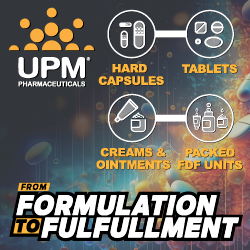Bio Platforms
GLOBAL REPORT – 2021 Global Drug Delivery & Formulation Report: Part 2, Notable Drug Delivery and Formulation Product Approvals and Technologies of 2021
In part 2 of this 3-part series, PharmaCircle, in collaboration with Drug Development & Delivery, focuses on notable drug delivery and formulation product approvals.
REGENERATIVE MEDICINE - Delivering on the Promise of Regenerative Medicine in Type 1 Diabetes
Thomas Donner, MD, explains how advances in stem-cell engineering, immune-evasion technologies, and vascularization of implanted cells have the potential to generate novel therapeutics that could lead to reduced treatment burden for patients with T1D and infuse new energy into efforts at finding a cure.
Vaxxinity Receives FDA Fast Track Designation for UB-311 for Treatment of Alzheimer’s Disease
Vaxxinity, Inc. recently announced that UB-311, an anti-amyloid beta immunotherapeutic vaccine, has been granted Fast Track designation by the US FDA for the treatment of Alzheimer’s disease…..
FDA Has Granted Veru a Pre-Emergency Use Authorization Meeting Date for Positive Sabizabulin Phase 3 COVID-19 Study
Veru Inc. recently announced the FDA has granted the company a pre-Emergency Use Authorization (EUA) meeting on May 10, 2022, for the positive Phase 3…
Denali Therapeutics Announces Achievement of RIPK1 Milestone for Phase 2 Clinical Trial Initiation in ALS by Sanofi
Denali Therapeutics Inc. recently announced its partner Sanofi has commenced dosing in a Phase 2 study, named HIMALAYA, of SAR443820 (DNL788) in individuals with amyotrophic…
Harpoon Therapeutics & Roche to Collaborate on Clinical Trials to Study Novel Immuno-Oncology Combination for Small Cell Lung Cancer
Harpoon Therapeutics, Inc. recently announced it has entered into a clinical supply agreement with F. Hoffmann-La Roche Ltd (Roche) to supply atezolizumab (Tecentriq) for use in the….
HiberCell Announces First Patients Dosed in Phase 2 Clinical Trial of Odetiglucan in Combination with KEYTRUDA in Adult Patients With Metastatic, Hormone-Refractory Breast Cancer
HiberCell recently announced the first patients have been dosed in a Phase 2 clinical trial of odetiglucan plus KEYTRUDA (pembrolizumab) for the treatment of metastatic,…
Vaxxinity Completes Enrollment in Part B of UB-312 Phase 1 Clinical Trial for Parkinson’s Disease
Vaxxinity, Inc. recently announced it has completed patient enrollment for Part B of its ongoing Phase 1 clinical trial of UB-312 in Parkinson’s disease (PD). Vaxxinity’s…
Caladrius Biosciences & Cend Therapeutics Announce Definitive Merger Agreement
Caladrius Biosciences, Inc. and Cend Therapeutics, Inc. recently announced the companies have entered into a definitive merger agreement under which Cend will merge with a wholly owned subsidiary of….
SOTIO Initiates CLAUDIO-01 Trial With Antibody-Drug Conjugate SOT102 in Patients With Gastric & Pancreatic Cancer
SOTIO Biotech recently announced it has dosed the first patient in its Phase 1/2 CLAUDIO-01 trial of SOT102 in patients with gastric and pancreatic cancer. SOT102 is the lead program of….
Prothena Receives FDA Fast Track Designation for Next-Generation Anti-Amyloid Beta Antibody Under Investigation for the Treatment of Alzheimer’s Disease
Prothena Corporation plc recently announced the US FDA has granted Fast Track designation for PRX012, a potential best-in-class anti-amyloid beta (Aβ) antibody therapy currently being…
GeoVax Announces Issuance of Malaria Vaccine Patent
GeoVax Labs, Inc. recently announced the US Patent and Trademark Office has issued Patent No. 11,311,612 to GeoVax, pursuant to the company’s patent application No.…
Editas Medicine Receives FDA Rare Pediatric Disease Designation for the Treatment of Beta Thalassemia
Editas Medicine, Inc. recently announced US FDA granted Rare Pediatric Disease designation to EDIT-301, an investigational, gene-edited medicine for the treatment of beta thalassemia. The…
Catalent Acquires Commercial-Scale Cell Therapy Development & Manufacturing Facility From Erytech
Catalent recently announced it has acquired from Erytech Pharma its state-of-the-art, commercial-scale cell therapy manufacturing facility in Princeton, NJ, for $44.5 million. The deal includes…
Priothera Receives FDA Clearance of IND to start Phase 2b/3 Study With Mocravimod in AML Patients Undergoing Allogeneic HSCT
Priothera Ltd recently announced the US FDA has provided clearance to proceed with the company's Investigational New Drug (IND) application to begin its pivotal Phase…
EpicentRx BETA-PRIME Phase 1 Study Progresses After Demonstrating Good Safety & Tolerability
EpicentRx Inc. recently announced the initiation of the next stage of its Phase 1 trial, BETA-PRIME, with AdAPT-001, a TGF-beta (TGFß) trap-enhanced cancer targeting adenovirus.…
Brooklyn ImmunoTherapeutics Announces Establishment of New R&D Facility for Advancement of Engineered Cellular Medicines
Brooklyn ImmunoTherapeutics, Inc. recently announced the establishment of a new corporate and research and development facility at The Boardwalk at Science Center Drive in San Diego, CA, to support translational….
Cocrystal Pharma Collaborates With the NIAD to Evaluate COVID-19 Protease Inhibitors
Cocrystal Pharma, Inc. recently announced a Non-Clinical Evaluation Agreement (NCEA) with the National Institute of Allergy and Infectious Diseases (NIAID) for exploratory preclinical studies to….
Enzyvant Announces Plans to Expand Regenerative Medicine Manufacturing Capabilities
Enzyvant recently announced plans to develop a Good Manufacturing Practice (GMP)-compliant regenerative medicine manufacturing facility in Morrisville, NC, part of the Research Triangle Park area.…
Blue Water Vaccines Presents New Data Supporting Universal Influenza Vaccine Candidate
Blue Water Vaccines Inc. recently issued the below statement regarding its Form 8-K filed with the Securities and Exchange Commission (SEC) on April 20, 2022,…
What are Bio Platforms?
Platforms (or asset-independent technologies to capture all kinds of capabilities that can be leveraged across many different drug candidate assets rather than just discovery tools that the term ‘platform’ immediately brings to mind) are ubiquitous in modern pharma. They are the product of an arms race, to secure access to the best capabilities in key areas.
Platform technologies are considered a valuable tool to improve efficiency and quality in drug product development. The basic idea is that a platform, in combination with a risk-based approach, is the most systematic method to leverage prior knowledge for a given new molecule. Furthermore, such a platform enables a continuous improvement by adding data for every new molecule developed by this approach, increasing the robustness of the platform.
But it has often been said that access to the latest technological platforms to aid efficient drug discovery and development is limited to Big Pharma, which can more easily justify the costs of creating and operating these platforms.
Benefits of Bio Platforms
Platform technologies have the ability to radically improve upon current products and generate completely novel products. In this sense, they open up new arenas for drug discovery and development, potentially increasing the number of therapeutic options for patients. Once a single compound or therapeutic has been generated and demonstrates a clinical benefit in patients, it is more likely this platform technology can successfully be applied to other therapeutic areas, derisking future compounds/products.
Complex drugs by their very nature are challenging and costly to manufacture. This, in turn, translates into higher costs for patients and other payers. In order to provide safe and effective therapies at a reasonable price, it is necessary for the industry to develop manufacturing technologies that reduce costs and provide a consistent product. While the initial investment may be larger, manufacturing costs will be lower over time as the manufacturing process is solidified.
Scale and Investment of Bio Platforms
Despite the initial upfront costs, platform technologies inevitably provide pragmatic solutions to production challenges, while yielding safer and more effective therapeutic products. It has often been said that one of the key features that distinguishes “Big Pharma” from biotech is access to the latest technological platforms to aid efficient drug discovery and development.
These platforms range from vast chemical libraries, ultra-high throughput screening and huge genetic databases in discovery, to predictive toxicology platforms, cutting-edge ‘omics’ and even deep-seated knowledge of particular therapeutic areas in development. All these platforms have two things in common: They can be used on any (or many) development candidate assets, and they cost huge sums to establish in the first place, and in a few cases each time they are used as well. Hence their restriction to the largest pharmaceutical companies (and a few of the so-called “big biotechs” that are, in many ways, indistinguishable from the old-guard pharma).
Only when you have hundreds of active projects can you justify the cost of creating and operating these platforms. Or so the mantra goes. It is access to these platforms that keeps the big companies ahead in the race to discover and develop the best medicines (or at least counterbalance the disadvantages of being large and slow-moving, depending on your point of view). But is that just an assertion? How much evidence is there to support the proposition that the efficiency gains due to these platforms outstrips the cost of creating and maintaining them?
Keeping these technologies “cutting edge” has become so expensive that increasingly we hear pharma companies talking of “pre-competitive” approaches to develop the next generation. A group of companies might develop a platform capability they then share. The principle goal of such initiatives is to access even grander and more expensive tools than individual companies could afford, rather than to dramatically cut costs (although sharing platforms rather than developing the same thing in parallel in each silo should at least keep a lid on rising costs).
















